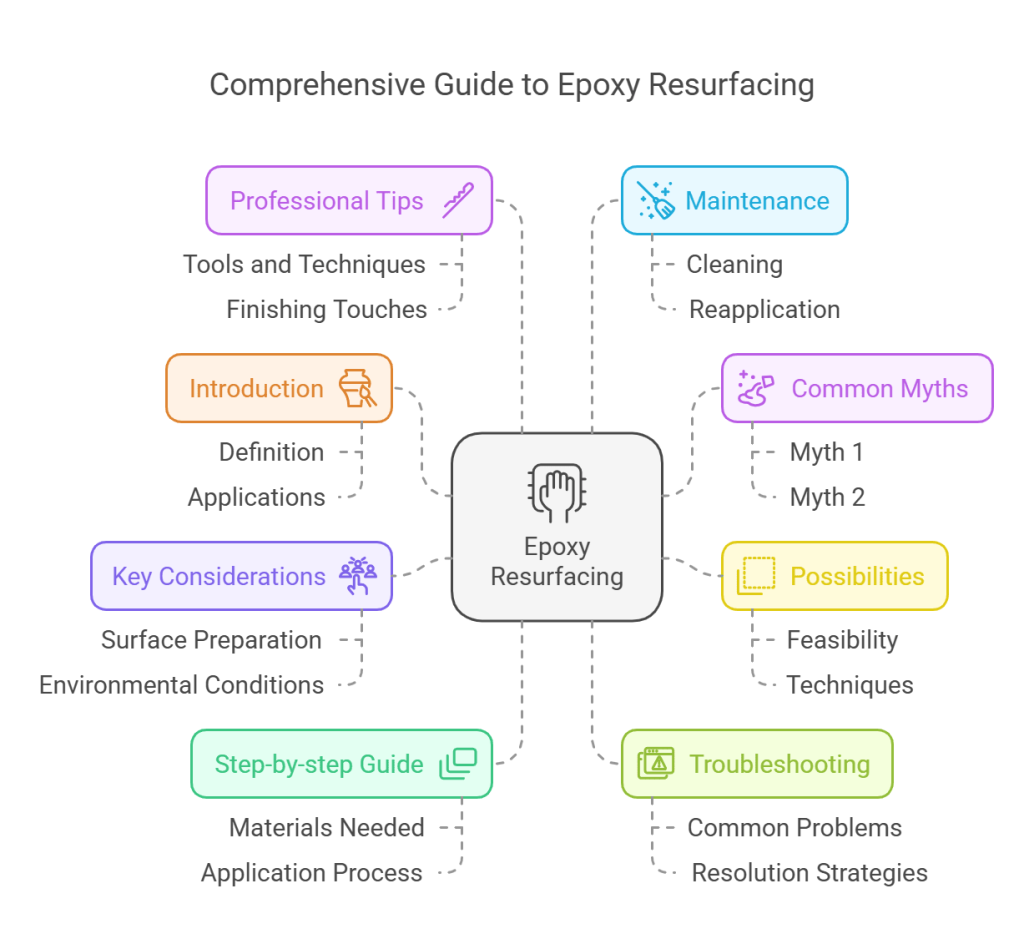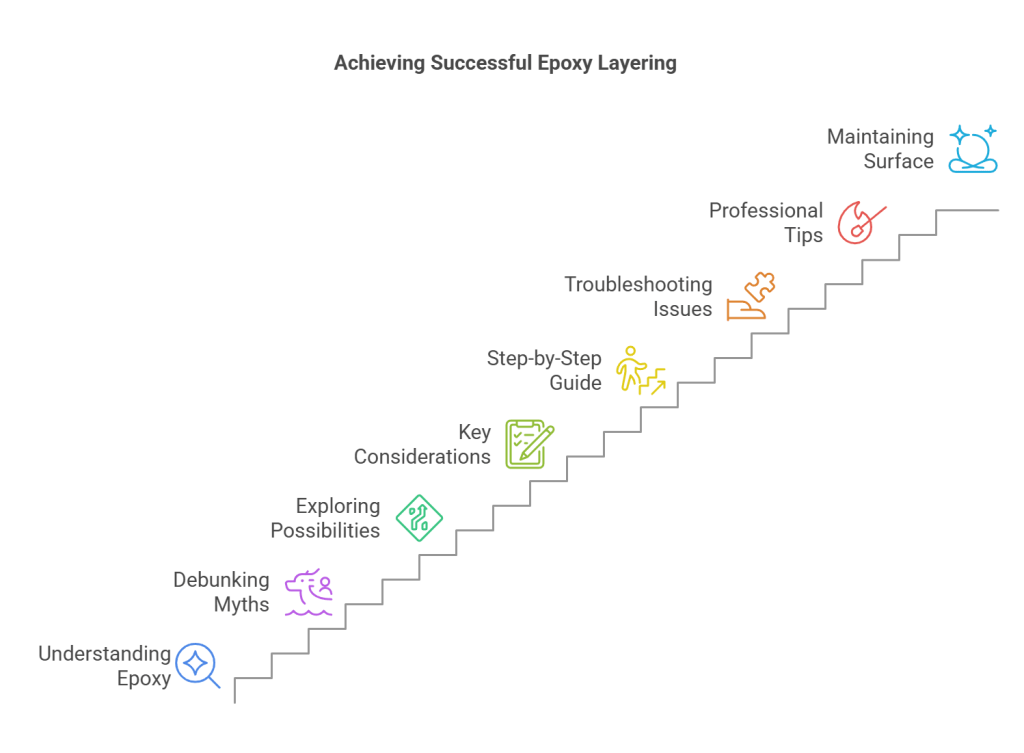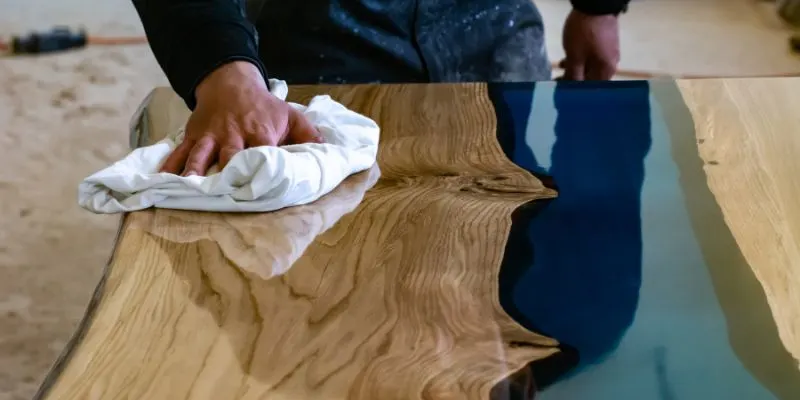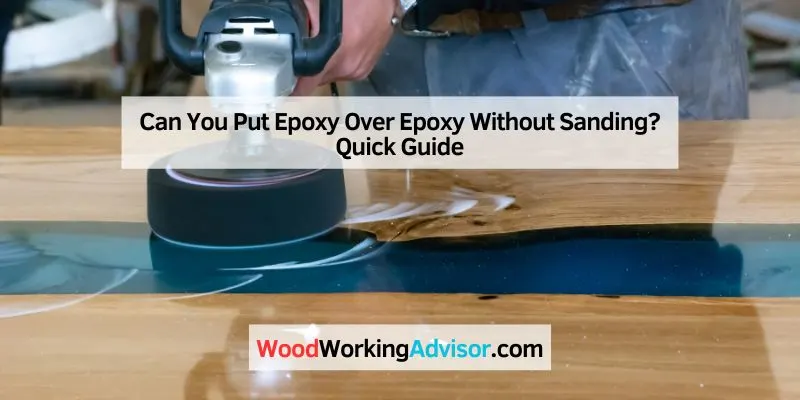Yes, you can put epoxy over epoxy without sanding, but it’s not recommended. For the best adhesion, sanding the surface is advisable.
Epoxy is a versatile material widely used in various applications, from crafting to industrial projects. Many people wonder about layering epoxy for better durability or aesthetics. While it’s possible to apply new epoxy over an existing layer without sanding, doing so may compromise the bond between layers.
Proper surface preparation enhances adhesion, ensuring a long-lasting finish. Understanding the properties of epoxy helps users achieve optimal results. This guide will explore the benefits of sanding and the best practices for applying epoxy to achieve a strong, durable surface. Get ready to elevate your epoxy projects with expert tips!
Introduction To Epoxy Resurfacing
Epoxy coatings are durable and strong. They protect surfaces from wear and tear. Understanding the basics of epoxy coatings is essential. These coatings can be layered for extra protection.
Layering epoxy offers several benefits. First, it improves the appearance of the surface. A fresh layer can make it look new again. Second, it adds strength to the existing layer. This can help prevent cracks and chips.
There are also practical reasons for layering. It can save time and money on repairs. Finally, it provides a seamless finish. This means fewer places for dirt and grime to hide.

Common Myths About Epoxy Application
Many people think sanding is not needed before applying new epoxy. This is a common myth. Sanding helps create a rough surface. This roughness improves the bond between the old and new layers. Without sanding, the new epoxy may not stick well.
Layer adhesion is very important. Poor adhesion can lead to peeling or bubbling. These problems make the surface look bad. A well-prepared surface ensures a strong and lasting bond. Always check the manufacturer’s instructions for the best results.
Epoxy Over Epoxy: The Possibilities
Applying epoxy over epoxy without sanding is possible. The adhesion depends on several factors. Proper surface preparation is key. Clean the old epoxy well to remove dust and oils.
Temperature plays a role in adhesion strength. Higher temperatures can improve bonding. The age of the existing epoxy can also affect results. Older epoxy may not bond as well.
Check the thickness of the existing epoxy layer. Thicker layers may need sanding for better adhesion. Using the right type of epoxy is essential. Some formulas are designed for layering.
| Factor | Effect on Bonding |
|---|---|
| Temperature | Higher temps improve bonding |
| Surface Cleanliness | Removes barriers to adhesion |
| Age of Epoxy | Older layers may weaken bond |
| Layer Thickness | Thicker layers may need sanding |
Key Considerations Before Applying
Surface preparation is very important before applying new epoxy. Clean the old epoxy to remove dirt and grease. A clean surface helps the new layer stick better.
Check the epoxy type compatibility. Different epoxy products may not bond well together. Always use products from the same brand for best results. Read the labels to ensure they match.
| Epoxy Type | Compatibility |
|---|---|
| Polyurethane | Not compatible with standard epoxy |
| Water-based epoxy | Compatible with solvent-based epoxy |
| Solvent-based epoxy | Best with similar solvent-based products |

Step-by-step Guide For Epoxy Layering
Start by cleaning the existing surface thoroughly. Use a mild detergent and water. Rinse well and let it dry completely. This step is vital for a good bond.
Next, prepare the new epoxy mixture according to the manufacturer’s instructions. Use a clean mixing container for best results.
Apply the new epoxy layer using a brush or roller. Ensure an even coat across the surface. Avoid thick layers, as they can lead to bubbles.
Allow the new layer to cure as per the instructions. This process usually takes several hours or days. Patience is key for a strong bond.
Troubleshooting Common Issues
Dealing with bubbles in epoxy can be frustrating. They form due to trapped air. To fix this, heat the surface gently with a torch or heat gun. This will help the bubbles rise and pop.
Preventing peel-offs is crucial for a durable finish. Make sure to clean the surface thoroughly before applying new epoxy. Use a degreaser to remove any dirt or grease. A light sanding can also improve adhesion. Always follow the manufacturer’s instructions for the best results.

Professional Tips For A Flawless Finish
Maintaining the right temperature and humidity is key for epoxy application. Ideal temperatures range from 70°F to 85°F. High humidity can affect the curing process. Always check the weather before starting your project.
Curing time also plays a crucial role. Each epoxy brand has specific cure times. Follow the manufacturer’s instructions for best results. Allow enough time for the first layer to cure fully before applying the next layer.
| Temperature | Humidity | Cure Time |
|---|---|---|
| 70°F – 85°F | Below 70% | Varies by brand |
Maintaining Your Epoxy Surface
Routine cleaning keeps your epoxy surface looking great. Use a soft cloth or a mop. Avoid harsh chemicals that can damage the epoxy. Warm water mixed with mild soap works well.
For long-term care, inspect the surface regularly. Look for scratches or bubbles. If you find any, repair them quickly. This helps maintain the integrity of your epoxy.
Always keep heavy objects off the surface. This prevents dents or scratches. Protect the surface from extreme temperatures. Too much heat can harm the epoxy.
Frequently Asked Questions
Can You Apply Epoxy Over Existing Epoxy?
Yes, you can apply epoxy over existing epoxy. However, proper surface preparation is crucial for adhesion. If the previous layer is intact and clean, you might skip sanding. Yet, roughing the surface slightly can enhance the bond, ensuring a durable finish.
Is Sanding Necessary Before Reapplying Epoxy?
Sanding is not always necessary when reapplying epoxy. If the previous layer is in good condition, you can skip it. However, sanding can improve adhesion and ensure a stronger bond. It’s recommended for best results, especially on old or worn surfaces.
What Happens If You Don’t Sand Before Epoxy?
If you don’t sand before applying new epoxy, you risk poor adhesion. The new layer may peel or bubble over time. A proper bond is essential for durability. Therefore, even light sanding can significantly enhance the epoxy’s longevity and performance.
How Long Should I Wait To Apply New Epoxy?
Typically, you should wait 24 to 72 hours before applying new epoxy. This timeframe allows the first layer to cure properly. Always check the manufacturer’s instructions for specific curing times. Waiting ensures a solid foundation for the new application.
Conclusion
Applying epoxy over existing epoxy without sanding is possible, but it requires careful preparation. Ensure the surface is clean and free of contaminants. Proper adhesion is crucial for durability. Always follow the manufacturer’s instructions for best results. This approach can save time while achieving a smooth, professional finish.

